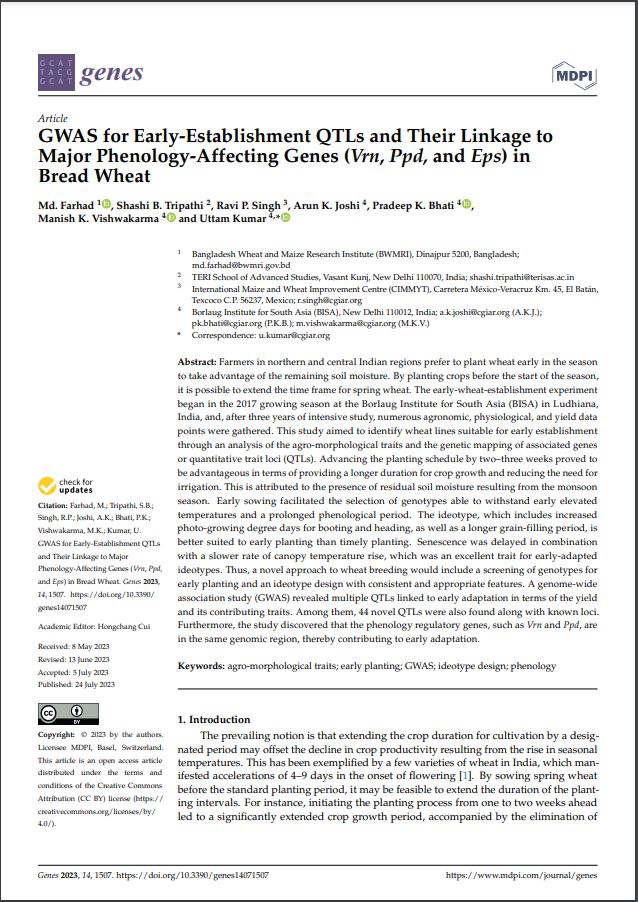Farmers in northern and central Indian regions prefer to plant wheat early in the season to take advantage of the remaining soil moisture. By planting crops before the start of the season, it is possible to extend the time frame for spring wheat. The early-wheat-establishment experiment began in the 2017 growing season at the Borlaug Institute for South Asia (BISA) in Ludhiana, India, and, after three years of intensive study, numerous agronomic, physiological, and yield data points were gathered. This study aimed to identify wheat lines suitable for early establishment through an analysis of the agro-morphological traits and the genetic mapping of associated genes or quantitative trait loci (QTLs). Advancing the planting schedule by two-three weeks proved to be advantageous in terms of providing a longer duration for crop growth and reducing the need for irrigation. This is attributed to the presence of residual soil moisture resulting from the monsoon season. Early sowing facilitated the selection of genotypes able to withstand early elevated temperatures and a prolonged phenological period. The ideotype, which includes increased photo-growing degree days for booting and heading, as well as a longer grain-filling period, is better suited to early planting than timely planting. Senescence was delayed in combination with a slower rate of canopy temperature rise, which was an excellent trait for early-adapted ideotypes. Thus, a novel approach to wheat breeding would include a screening of genotypes for early planting and an ideotype design with consistent and appropriate features. A genome-wide association study (GWAS) revealed multiple QTLs linked to early adaptation in terms of the yield and its contributing traits. Among them, 44 novel QTLs were also found along with known loci. Furthermore, the study discovered that the phenology regulatory genes, such as Vrn and Ppd, are in the same genomic region, thereby contributing to early adaptation.

